I first tried hiyashi chuka as a little girl, during the dog days of the summer breaks I spent in Japan. It’s so refreshing when it’s hot outside. Vinegary, savory, frigid dressing poured over chewy, cold ramen – topped with the garden! Now I eat it year round. Just 20 minutes, start to finish.
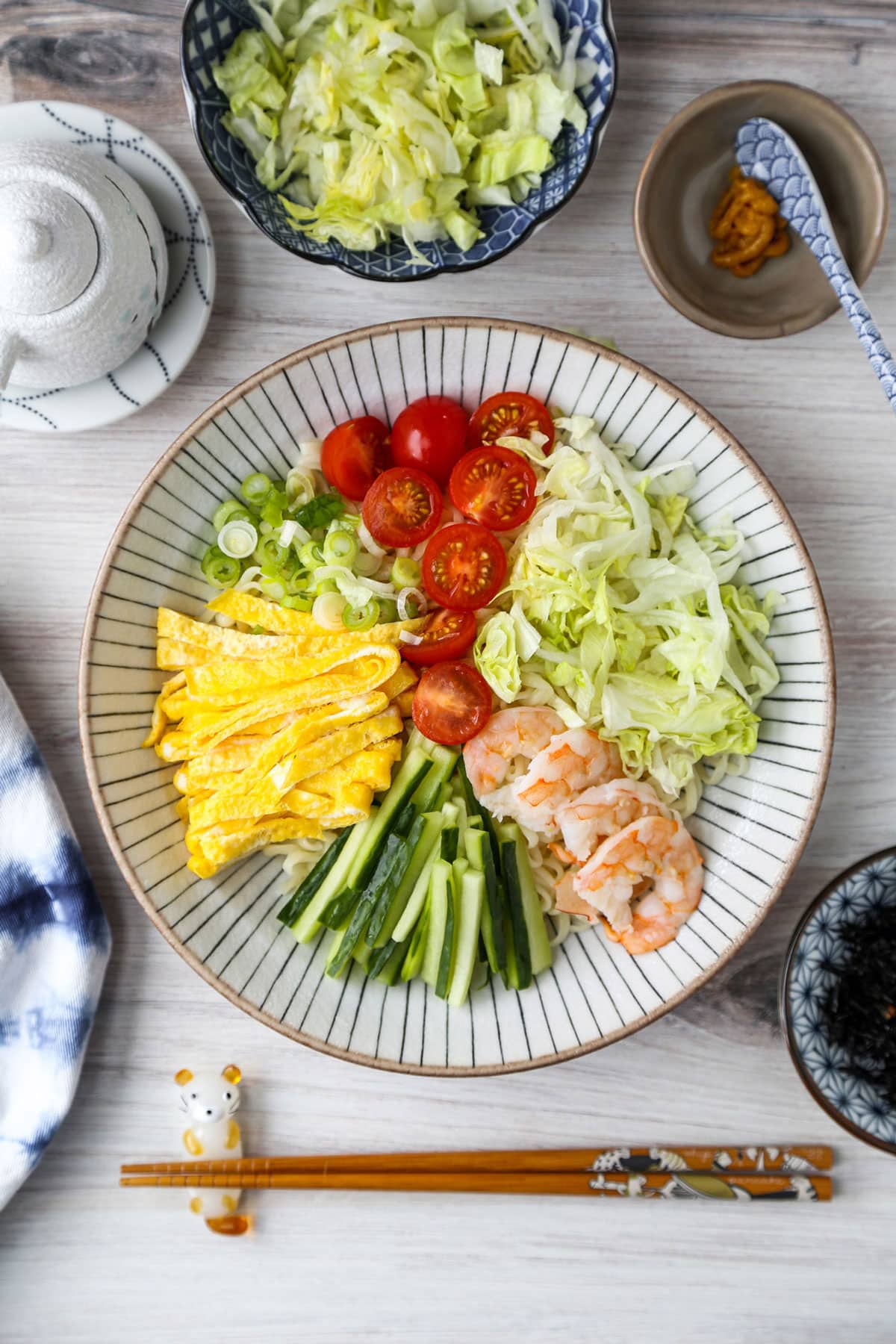
Anytime the summer heat and humidity get out of hand, I start craving cold ramen noodles topped with garden fresh tomatoes, cucumber, and lettuce – rounded out with sweet and savory tamagoyaki and tender shrimp. And I top my hiyashi chuka with a nutty, sweet, umami and acidic dressing featuring soy sauce, vinegar and sesame oil. Plus a squirt of hot Japanese mustard (karashi).
While the sauce is authentic, I’ve always made hiyashi chuka with the ingredients I like rather than trying to stick to the traditional toppings. For example, cold ramen in Japan typically comes with portions of either sliced ham or chashu pork. While I steer clear of meat these days, the versatility of hiyashi chuka means you can easily add whatever you like. For example, I make this without the egg and shrimp for my vegan friends all the time – and it’s just as enjoyable as when I slice up some ham for my Japanese mom who prefers the old-school preparation.
Table of Contents
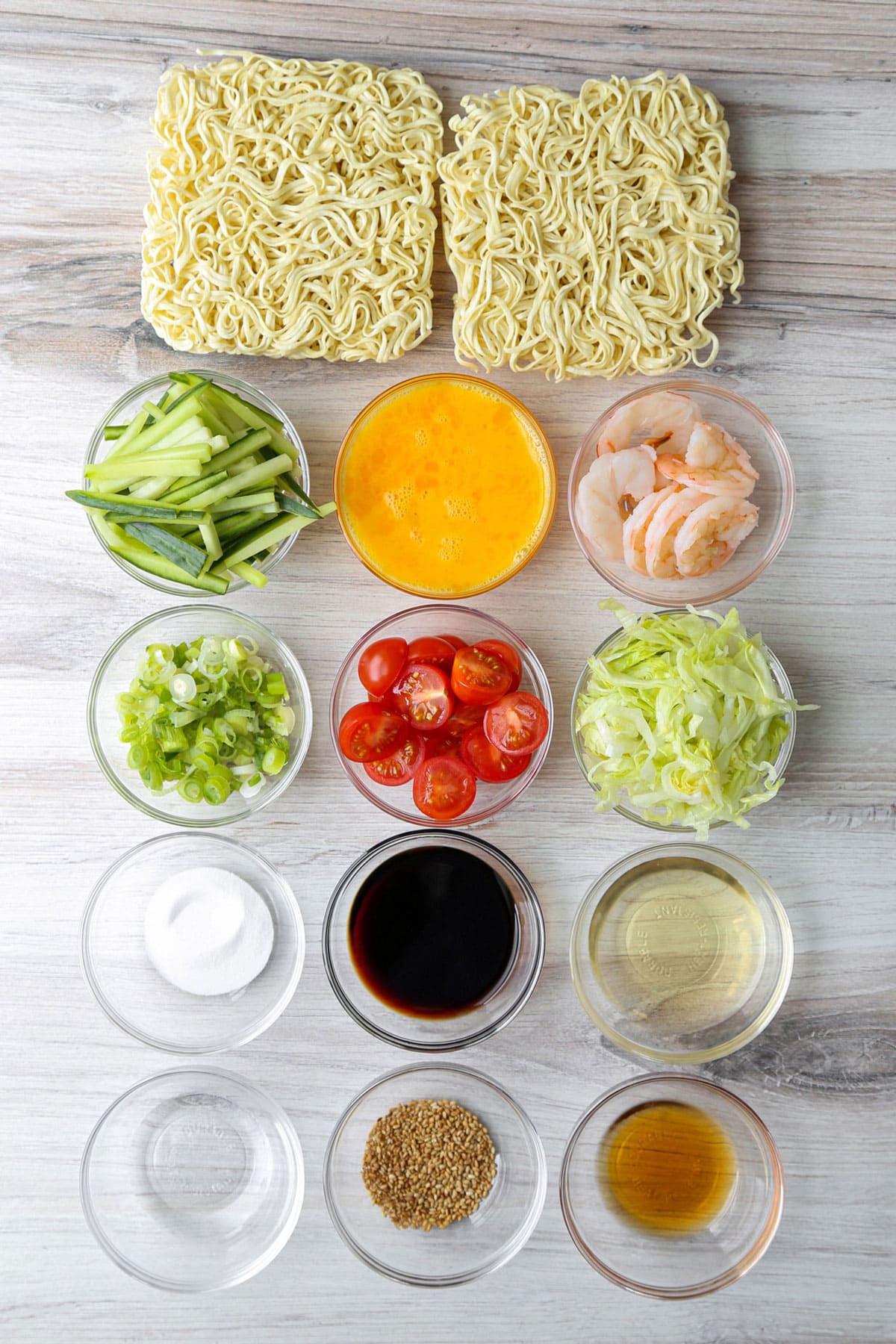
Ingredients
Scroll to the recipe card at the bottom of this page for the full recipe steps and measurements.
- Ramen Noodles. I use fresh or dried ramen noodles for this recipe interchangeably. As long as the cooked noodles come out chewy, they work.
- Omelette: The omelette should be thin like a crepe so that it can be sliced into long ribbons.
- Shrimp: Fresh or frozen works. I look for US or Canada wild caught shrimp – or anything bearing the Marine Stewardship Council (MSC) blue and white label.
- Lettuce, Tomatoes, Cucumber and Green Onions. These are my summery salad toppings. Shredded lettuce adds a clean and refreshing element to this ramen noodle salad. For the tomatoes, the sweeter the better. I prefer Japanese, kirby or English cucumbers for the best snappy crunch.
Hiyashi Chuka Sauce
I mix soy sauce, rice vinegar, sugar, water, toasted sesame oil, and sesame seeds. It’s puckery sour, a little sweet and a little nutty. It’s absolutely delicious!

Variations
The beauty of hiyashi chuka is that it’s very flexible in terms of ingredients. That means making big changes doesn’t affect the overall eating experience too much. As long as it’s cold noodles with toppings, it’s very forgiving.
Make it vegetarian. Swap the shrimp for smoked tofu instead.
Stick with tradition. Sliced ham or cold chashu (roasted pork) is the usual move here.
Swap the noodles. I’ve used thin spaghetti in a pinch. And, while it definitely ate more like a plate of chilled Japanese spaghetti than cold ramen, it was still satisfying. Somen noodles work too.
Use tsuyu instead of the hiyashi chuka sauce. Mentsuyu is the concentrated cold Japanese broth I’d use for zaru soba or summery bukkake udon. Mentsuyu is less vinegary and bright – but the flavors are close enough that it works.
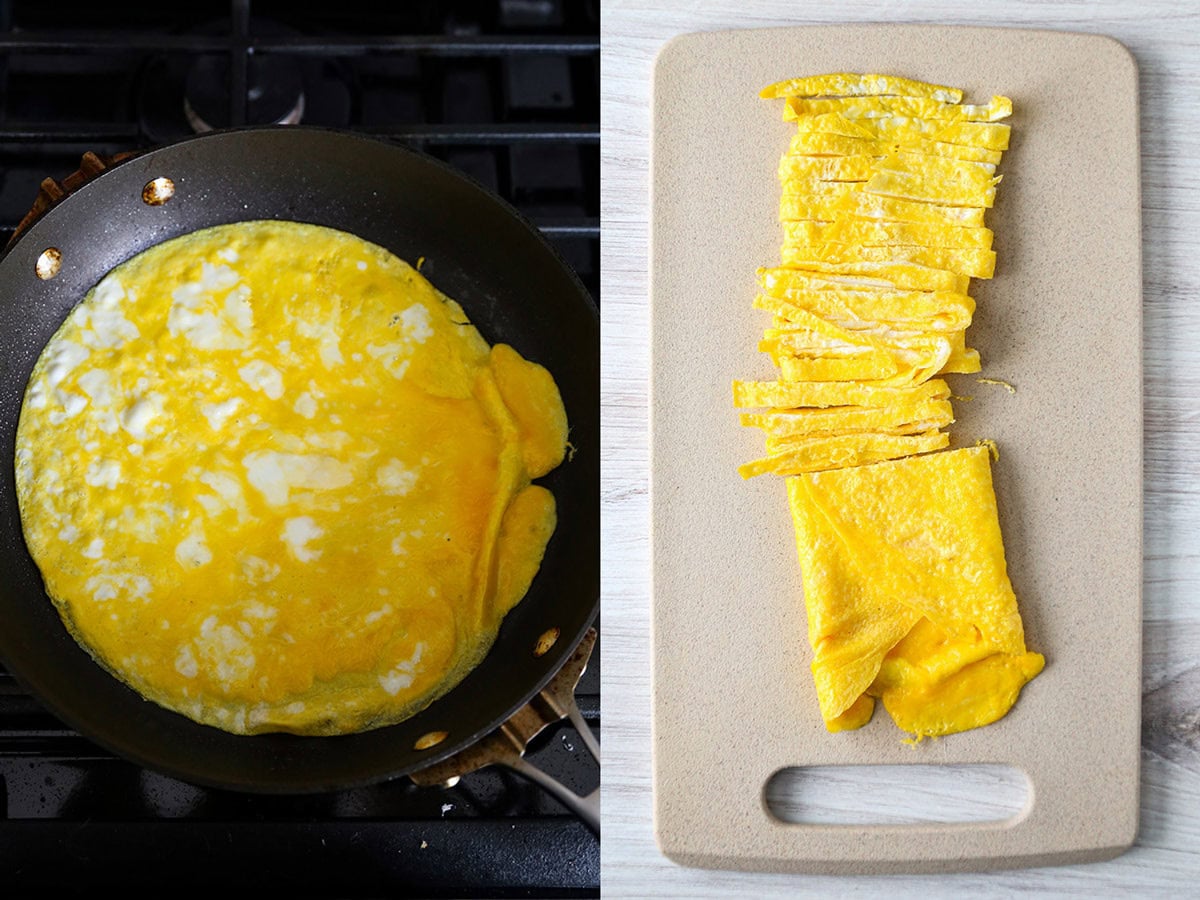
How To Make It
- Make the sauce. Whisk all the sauce ingredients together in a bowl and set aside. Store in the fridge to keep it cold.
- Prepare the omelette. Use a medium or large skillet over medium heat with a little oil. Add the whisked egg and spread the mixture as thin as possible. Once the omelette is cooked, remove from the heat and slice into thin ribbons on a cutting board.
- Prep the noodles. Cook according to the package instructions, then drain.
- Assemble the hiyashi chuka. Cold ramen goes on the bottom. Layer the toppings and pour sauce on top. Serve with Japanese mustard (karashi mustard).

Expert Tip
Rinse the cooked noodles immediately under cold water. This stops the cooking process. Once the noodles are cold, drain again.
I know this advice seems like it flies in the face of convention. For example, when making Italian pasta, the last thing you want to do is to rinse the valuable layer of starch off the spaghetti by rinsing it in cold water after cooking (starch is what makes the sauce stick to spaghetti). But this step is obligatory when making Japanese ramen noodles for hiyashi chuka – and has zero drawbacks.
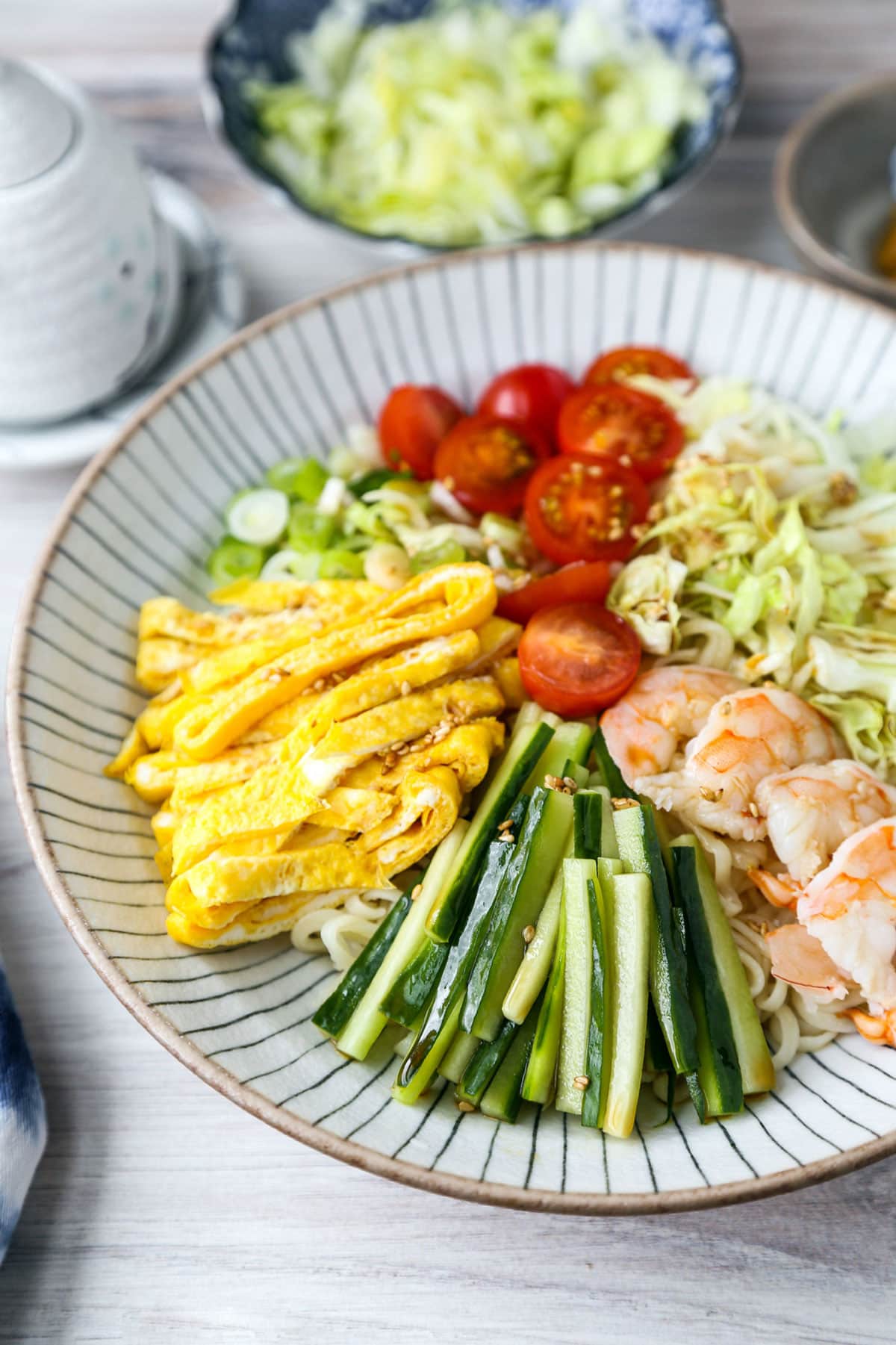
What I Serve With Hiyashi Chuka
When I’m not recreating a ramen and chahan teishoku (meal set) at home, I stick with lighter Japanese summer fare. Here are a few of my favorites:
- Gomaae – Japanese Spinach Salad
- Kani Salad
- Japanese Coleslaw
- Shiraae – Japanese Tou Salad
- Scallop Crudo
- Green Salad With Japanese Carrot Ginger Dressing
Other Japanese noodle recipes: shoyu ramen, spicy miso tsukemen, yaki udon, shio ramen, soba ankake with mushrooms, spicy miso ramen, ginger dashi tsukemen
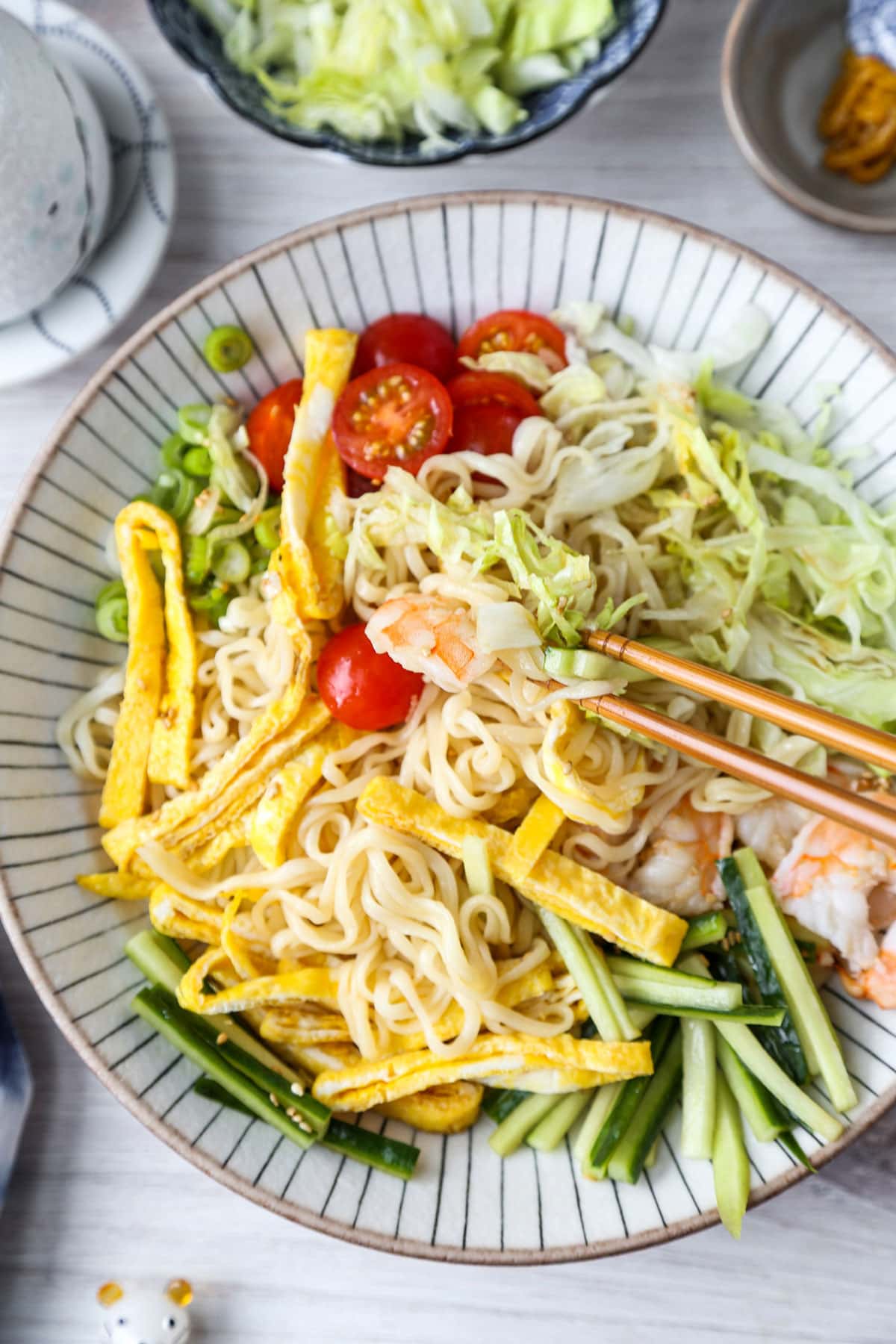
Make Ahead Option
I frequently make a large batch of the hiyashi chuka sauce and keep it in the refrigerator inside a glass jar with a lid for up to a month. That shaves some time off the cook time. Likewise, I’ll pre-chop veggies in the afternoon when I’m serving this the same night.
However, I always make the noodles and the omelette fresh – right before serving.
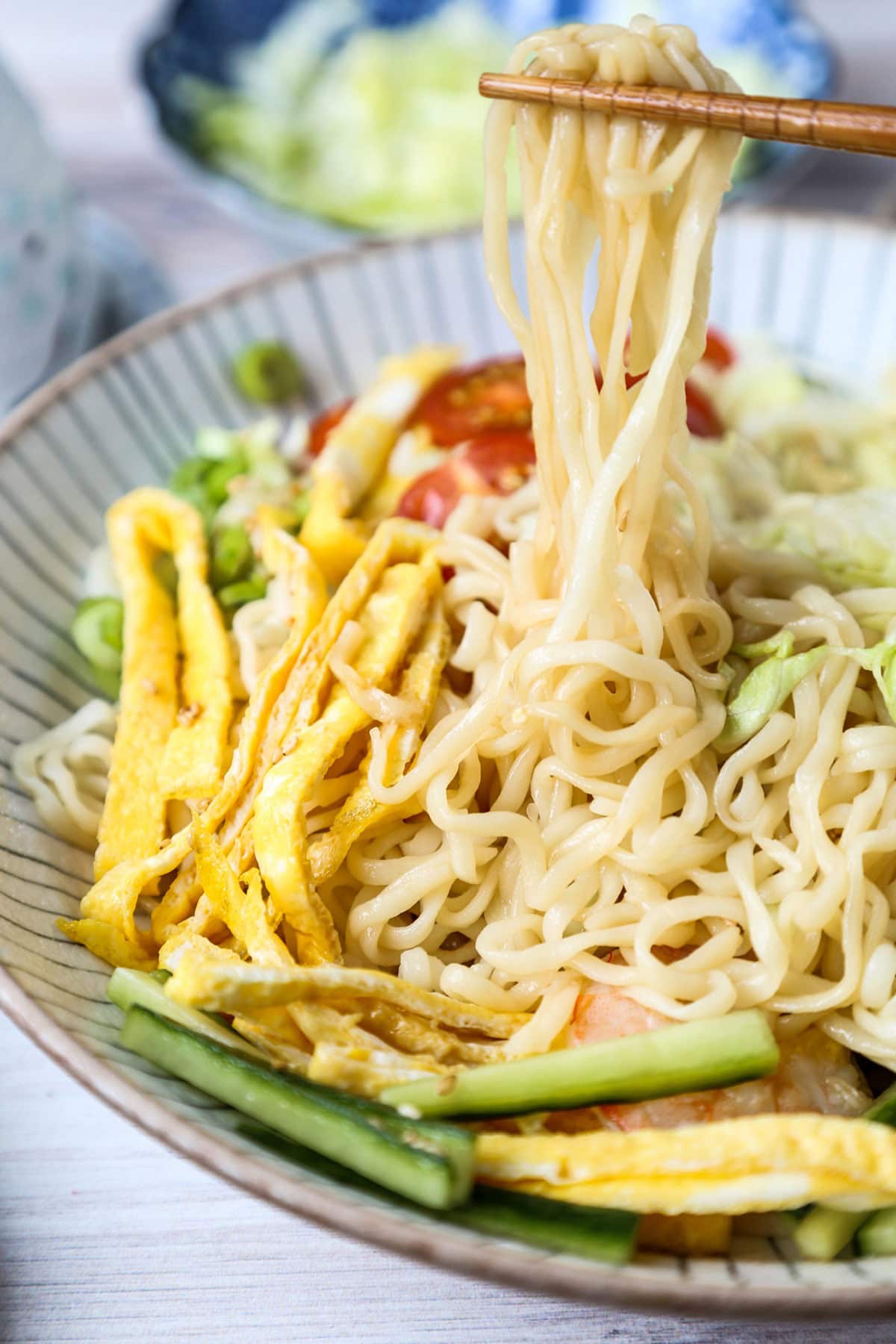
Frequently Asked Questions
Since this is a cold dish, the ramen noodles should be cooked, drained and immediately rinsed under cold water to cool them down. If the noodles aren’t chilled, they’ll continue to cook. Ramen gets sticky when left out hot (and not in liquid).
Other names for hiyashi chuka include reimen (Japanese for “chilled noodles”), which is often used in the Kansai region – and hiyashi ramen, which is used in the northern region of Hokkaido.
Did you like this recipe? Are there changes you made that you would like to share? Share your tips and recommendations in the comments section below!
Print
Hiyashi Chuka (Chilled Ramen)
- Prep Time: 15 minutes
- Cook Time: 5 minutes
- Total Time: 20 minutes
- Yield: 2 1x
- Category: Noodles
- Method: Boiling
- Cuisine: Japanese
Description
I’m powerless to the pull of chewy ramen noodles tossed in a sweet, sour, nutty, and savory sauce. Make my hiyashi chuka recipe at home in just 20 minutes!
Ingredients
Hiyashi chuka sauce
- 3 tablespoons plain rice vinegar
- 1 tablespoon sugar
- 3 tablespoons soy sauce (or Tamari for gluten free)
- 1 tablespoon water
- 1 tablespoon toasted sesame oil or chili oil
- 1/2 tablespoon white sesame seeds
Noodles
- 12 ounces fresh ramen noodles, or 6 ounces dry ramen noodles (for vegan: use vegan ramen noodles or thin spaghetti – Barilla and De Cecco are both vegan).
Toppings
- 2 large eggs, whisked (for vegan: 1 small carrot sliced into thin ribbons or sticks).
- 1/4 English cucumber, julienned. You can also use 1 kirby cucumber or 1/2 Japanese cucumber
- 4 cooked shrimp, sliced in half lengthwise (for vegan: half a block of firm tofu, drained and cubed).
- 1/2 cup shredded iceberg lettuce
- 2 green onions, thinly sliced on the bias
- 6 cherry tomatoes, sliced in half, or 1/2 small tomato, cut into 6 wedges
- Hot Japanese mustard (karashi mustard) – optional but highly recommended!
Instructions
- Make the sauce. Whisk all the sauce ingredients together until the sugar has dissolved, and set aside.
- Prepare the omelette. Brush a medium size pan with a little oil and turn the heat to medium. When the pan is hot, add the whisked eggs and spread them to create a thin crepe. Cook for 1-2 minutes, until the omelette is cooked. Fold each side to the center so the omelette is rectangular shaped. Turn the heat off, transfer the omelette to a cutting board. Let cool for 2-3 minute. Then grab a chef’s knife and slice the omelette into thin strips. Set aside.
- Prep the noodles. Boil the ramen noodles according to the directions on the package (usually around 2-3 minutes for fresh noodles). Drain and rinse under cold water. Drain again well and divide the noodles among two serving bowls.
- Arrange the plates and add sauce. Divide the toppings and arrange them nicely on top of the noodles. Pour the sauce on top and serve with hot Japanese mustard (karashi mustard).
Notes
Make ahead option: make the hiyashi chuka sauce ahead of time and keep it in the fridge in a glass jar with a lid for up to 1 month.
Nutrition
- Serving Size: 1 serving
- Calories: 496
- Sugar: 23g
- Sodium: 748.2mg
- Fat: 16.5g
- Saturated Fat: 3.4g
- Unsaturated Fat: 5.3g
- Trans Fat: 0g
- Carbohydrates: 69g
- Fiber: 3.4g
- Protein: 19g
- Cholesterol: 251.4mg
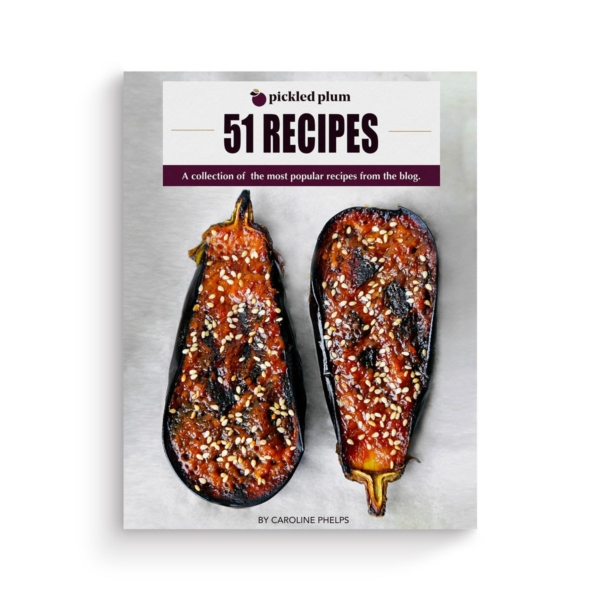

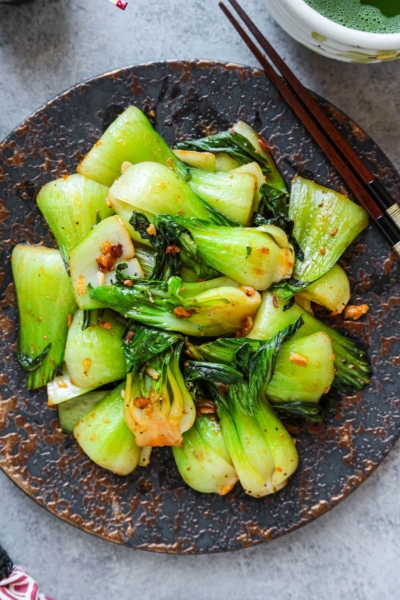

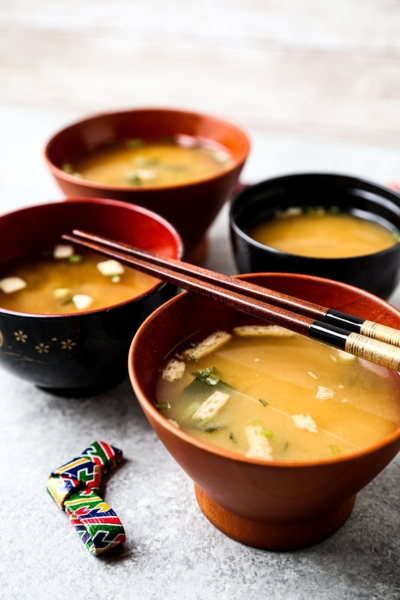










So happy this was in your what to cook email! Which I’m also loving btw! Soooo helpful to have inspiration and reminders when cooking daily for your family. Anyway back to the レーメン as I called it growing up (I’m your half Japanese half British fan who grew up between Hong Kong, Fukuoka and England btw). It was always something I thought I could only have from packets that we’d haul back from Japan so was a very rare treat! But as with so many of your other recipes, I now can have it whenever I want and as much as I want without worrying about preservatives and other nasties in instant stuff! So thank you thank you ☺️
Hi Jo! You grew up in Fukuoka! That’s where my mother is from and where she is currently residing 🙂 I also lived in Hong Kong for about 3 years so we do have quite in common! I’m glad you liked the recipe as there is nothing better than chilled ramen when the temperature warms up ❤️ Thank you!